So you’ve decided you want to start live streaming to Facebook, YouTube, Twitch, or any of the other platforms out there. You have your laptop, you’ve got your video camera. But what next? How do you get the camera signal to the computer and out to the internet? Well, you’re in luck because we’re going to walk you through exactly what equipment you need to live stream to Facebook, YouTube, Twitch, and more with your video camera.
One quick note before we go forward, however. This guide is specifically for the required equipment or hardware you’ll need, not necessarily how to go live on your platform of choice. Usually, these options are pretty easy to find in the interfaces, and they do have extensive documentation on how to do this.
Also, there are specific apps for streaming, such as OBS, SLOBS, Xsplit, and more. Those are extensive topics on their own, and we won’t be covering that here. Anyway, on with the show!
How to live stream to Facebook, YouTube, Twitch, and more with a video camera
|
Contents
- 1 What do you need to live stream video with a camera to Facebook, YouTube, Twitch, and more?
- 2 Using your video camera for video conferencing with Zoom, Skype, and other teleconferencing apps
- 3 Cameras for live streaming video
- 4 Computer or laptop for streaming live video
- 5 Video capture card/device for live streaming video
- 6 Live streaming video without a computer or laptop
- 7 Final thoughts
What do you need to live stream video with a camera to Facebook, YouTube, Twitch, and more?
You don’t need much to get your camera’s image onto a live stream, most of which you probably already have:
- Camera with a clean HDMI output (here are some of our favorite live streaming cameras!)
- Laptop or computer to broadcast your video online
- Video capture card or capture device to get the camera video into the computer
- Light!
- Microphone suitable for good clean voice recording (optional but highly recommended) – See our guide to microphones for live streaming
- Audio interface to capture the microphone’s signal (necessary depending on the type of microphone) – See our guide to audio interfaces for live streaming
- Headphones for monitoring audio (optional, recommended for game streamers)
Using your video camera for video conferencing with Zoom, Skype, and other teleconferencing apps
Believe it or not, you’re not actually just limited to streaming to Facebook, YouTube, or Twitch with your video camera. Yes, while you may be using platform-specific tools or software like OBS, SLOBS, Xsplit or other streaming software for your typical live streaming, you can actually use your same setup for video conferencing.
The majority of the hardware video capture devices we suggest here actually make use of the UVC protocol, or USB Video Device Class. What this means is that capture devices like the Elgato Cam Link 4K actually is recognized as a webcam.
Functionally, this means that any application that can recognize the webcam on your laptop (or a C920, for example) can see whatever is connected via the Cam Link 4K. This includes Skype, Zoom, Facebook Messenger, Hangouts, or anything else that lets you choose your webcam.
The benefit is that if you have a killer live streaming setup with a great streaming camera and excellent lighting for your live stream you can make use of this and flex on the rest of your coworkers in style.
While many of our favorite video capture devices are recognized by OBS, SLOBS, Xsplit, and the like, they may not support UVC protocol. If you plan on using your camera in Skype, Zoom, Hangouts, and other video calling apps, you’ll want to ensure that the capture device you choose will support this UVC protocol.
Update: We have put together as comprehensive of a list as possible of all the major brands’ video capture devices that are current and support the UVC protocol, allowing you to use your mirrorless or DSLR as a webcam for applications like Skype, Zoom, Hangouts, and more.
Cameras for live streaming video
Since live streaming video is already pretty compressed, cameras are almost a diminishing return sort of thing. You do want something relatively good (especially if you plan on using it for non-streaming uses), but you don’t need to break the bank. It doesn’t matter whether it’s a DSLR, mirrorless, point and shoot, or camcorder, anything will work.
You will, however, want a camera with clean HDMI out (no menus on the output), something with an external power adapter, the appropriate lens for your setup, and perhaps good autofocus if you want it to track your face. We’ve written up a huge guide on our picks of the best cameras for live streaming to Facebook, YouTube, Twitch, and more so definitely go check that out.
Computer or laptop for streaming live video
You will need a computer with enough horsepower to encode video and upload it without dropping frames and breaking up the stream. Higher core count processors are beneficial here, with Ryzen being a new contender to Intel CPUs thanks to its high core count and low price. But that’s better addressed elsewhere. ()We plan on updating our Ryzen for content creators post now that Ryzen 3 is released, so keep an eye on that one!).
Really, if you’re just streaming video then it’s a good chance that your existing computer (given that it’s somewhat recent-ish) will do quite nicely. If you’re streaming games to Twitch, however, you may need some extra horsepower to be able to handle both the game and the video broadcasting.
Do you need a laptop or computer to live stream video?
The short answer is technically no, but it’s definitely the easiest way. The computer is basically your video ingest device (along with the video capture card), your video control, and your broadcast device all in one. While there are dedicated video broadcast equipment for both studio (home/indoors) and out in the field (away from the studio/home/laptop/wifi), they’re infinitely more expensive and unnecessary for 99% of live streaming video applications at which this post is aimed.
Video capture card/device for live streaming video
Yes, your laptop most likely has an HDMI port on it already (or mini-HDMI, DisplayPort, or mini-DisplayPort), but unfortunately, that’s almost always an output to connect to an external monitor. Almost all laptops do not have a video input, making a video capture card (or device) a necessity. So how do you get your camera output into your laptop or desktop?
Commonly referred to as a video capture card thanks to traditionally being a PCI expansion card that goes inside your desktop computer, a video capture device simply does what its name implies: it captures the video signal of whatever is plugged into its input and makes it available for the computer software to see and manipulate.
These have now commonly become external boxes connected mostly via USB, and can be used without tearing open your computer to install them. While there are a ton of these on the market now with varying degrees of quality and features, we are now almost always recommending one single device.
Elgato Cam Link 4K – The best video capture device for live streaming video
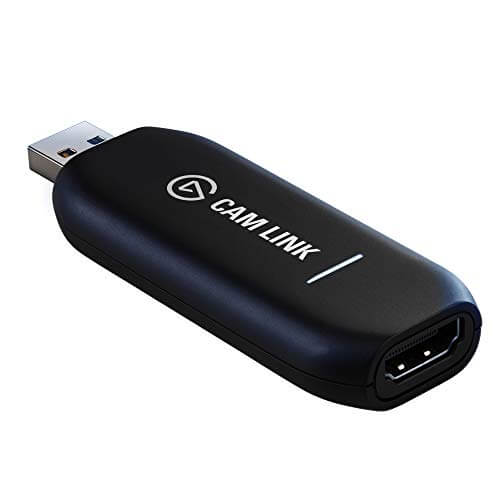
Update, 3/26/20: Due to the increased demand for live streaming devices, the Cam Link 4K is pretty much sold out most places. We’ve started a guide to some of the best alternate live streaming devices to this and other equipment that live streamers may need during this crisis and will be attempting to update it as often as possible. These alternatives will be ones that (at the time of updating the guide) will be shipping faster than the normal Amazon delayed notice for most items. If you can’t find this device, please see our list of alternatives.
Initially covered in our aforementioned streaming cameras guide, the Elgato Cam Link 4K is fairly new, and an update of their existing Cam Link. This device is seriously impressive as it can accept HDMI inputs up to 4K 30fps, and will do 1080p at 60fps. And it’s not a box–it’s a USB dongle, making it perfect for streaming video from a laptop.
Insane, right? Well, this has quickly become the go-to for streamers and general video capture. It even works with Skype, OBS/SLOBS, and any other application that can recognize webcams because it actually registers its signal as a webcam.
All these features (and the many more we’re not covering here) along with a very affordable price make this our number one pick for video capture devices for both desktop and laptop computers. Unless you need specialized features we don’t see a better option out there.
Buy Elgato Cam Link 4K hereEpiphan AV.io HD and 4K – Rock solid reliability for mission-critical video capture
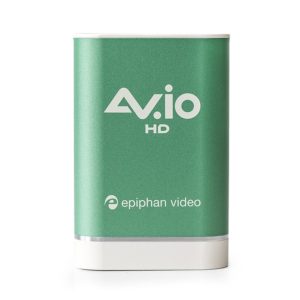
We’ve recently espoused the reliability of the Epiphan AV.io capture devices in our guide to cameras for live streaming and live video broadcasting, and they warrant another mention here. They’re considerably more expensive than other options on this list, but if you need insanely reliable can’t-break-it devices, these are your ticket to success.
There is a 1080p version and a 4K version available for those with massive bandwidth available. They interpret your incoming camera signal into a webcam camera that Windows can natively use in almost any video application, and are fully capable of hot-swapping the inputs in case anything comes unplugged while streaming.
Definitely a pricey option, but if you’re doing mission-critical streaming you can’t go wrong here with the Epiphan AV.io family.
Buy Epiphan AV.io 4K hereElgato Game Capture Card HD60 S – Game console capture for streaming
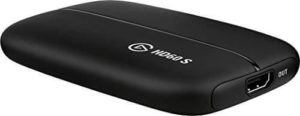
Everything in this article has been geared toward users who want to capture a camera input device. But what about those streamers who are playing console games? How would you capture and stream your Xbox One or Playstation 4?
Enter the Elgato HD60 S. This is a USB type-C device that allows you to connect your game console’s output and then send that out from the device to your TV while also piping the signal to your computer to include in your stream.
The usual issue with these pass-through capture devices is the latency, but that’s not really an issue with the HD60 S. Elgato calls it Instant Gameview, and promises ultra-low latency so your gaming session isn’t impacted by the capture device.
This particular device doesn’t do the h.264 video encoding for you, so your computer’s CPU will be handling that load, so keep that in mind. It will, however, support up to 1080p60 capture, so your games will look silky smooth.
There are other devices in the game capture line with more features, higher resolution, and other nice-to-haves, but as far as a dead simple affordable game capture device, this is the perfect starting point.
Buy Elgato Game Capture Card HD60 S hereLive streaming video without a computer or laptop
Live streaming with a desktop or laptop computer is pretty straightforward, as we’ve shown. You most likely have almost everything you need. But what if you need to live video broadcasting out in the field, away from your home or office/studio? That’s where it gets a bit more complex, and a lot more expensive.
With a computer-based setup, your computer (and the capture device) handles the signal ingest, video encoding, video broadcast prep (titles, camera/game layouts, etc), and the actual broadcast to the streaming platform over the network. It’s a handy self-contained system.
When you’re away from the desk, on the move without power, network/wifi, and, well, a desk, you need all of those components with you. You can’t be messing around with a laptop, so you’ll be looking at dedicated setups that consist of these functions in separate devices.
What do you need to stream without a desktop or laptop computer?
- First you’ll need a video capture device that does encoding. Most will encode to h.264, however there are h.265/HEVC encoders available.
- You’ll need a network device, such as a portable LTE modem. LTE modems are often not quite enough bandwidth by themselves, so you’ll need multiple modems to work together, which means…
- Network bonding. Bonding is the act of taking multiple network connections and bridging them together to act as one network connection. This ensures more network bandwidth and redundancy incase one modem loses signal.
- High-gain antennas to get those modem signals the best tower connection possible.
- Massive batteries. Usually Gold or V Mount batteries because of the high capacity.
- A way to keep all this equipment cool.
- Something in which to carry all these separate things.
There are more and more live video broadcasting streaming encoders out on the market, but unfortunately even the affordable ones are still pretty pricey. But here’s a few of our current favorite options if you’re so inclined to get out there and broadcast from the field.
Teradek Bond 659 backpack
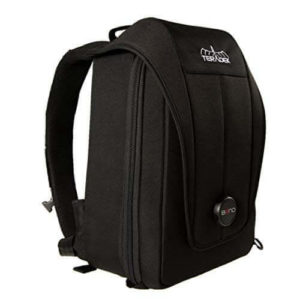
I’m an avid disc golfer (and occasionally blog about disc golf!), and as such watch a good amount of pre-recorded footage and live tournaments. Disc golf isn’t a huge sport like traditional golf, and as such the community has had to figure out a way to get the live coverage where there’s no infrastructure for full stationary camera setups, and do it at a fraction of the cost.
One of the most prominent disc golf YouTube channels out there, SmashBoxx, has been streaming tournaments for years, and use Teradek Bond kits for their two on-course cameras (one at the tee, one at the basket, called a “catch cam”).
Teradek is known for excellent wireless transmission gear for professional applications, and the Bond backpack kits are probably the most well-rounded and modular setups available right now. They come with almost everything you need to get up and running, even if you don’t have any modems of your own.
The backpacks come with the Teradek Cube h.264 encoders (h.265 in the Bond 759) to handle the video input and compression, the Bond device to bond together multiple modems, and four Node modems for whichever geographical region you choose when you buy the set.
You’ll also get the massive high-gain antennas and your choice of battery mount system, but you’ll have to supply your own batteries (hence the aforementioned “almost everything”). The whole setup is connected with locking cables so nothing can come loose in the backpack, and there’s an active cooling system to keep everything running outdoors.
Typically the data stream from these setups will be fed to a control room where all of the titles, graphics, camera angle cuts, and voiceover/announcing can be coordinated. This frees the camera operators to do exactly what their job title says, and all other decisions are handled remotely.
While they have a fairly high price attached, the reliability and plug-and-play functionality really do make these excellent remote live streaming encoder kits. For those who need rock solid stability, the Teradek Bond backpacks should be your first stop for an all-in-one solution.
Buy Teradeck Bond 659 hereLiveU Solo Wireless Live Video Streaming Encoder
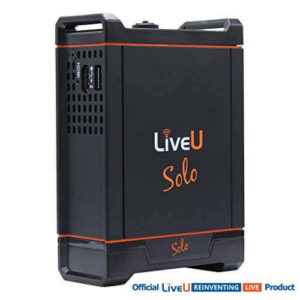
The LiveU Solo is a much more affordable solution, albeit less robust. This is a smaller device meant for smaller outfits, but still provides a solid option for remote video broadcasting.
You won’t need to supply your own battery, as there’s an internal rechargeable battery that can supply up to 3 hours of broadcasting. You can bond up to four connections, including one wifi, one ethernet, and up to two LTE or WiMax modems connected via USB, which you will need to provide on your own.
The stream can be monitored on the small built-in display, and your stream destinations set up via the LiveU Solo portal on any web-connected device. It’s a relatively dead simple setup and is easy to operate for on-the-go video broadcasting and makes an excellent single person live streaming setup for when you’re away from your home base.
Buy LiveU Solo Wireless Live Video Streaming Encoder hereSlingStudio Hub and SlingStudio CameraLink
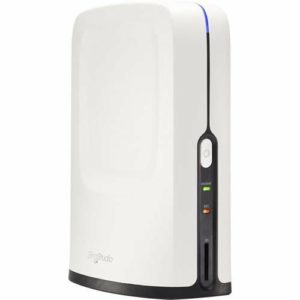
We’ve been meaning to put together a full guide on the SlingStudio Hub and its associated devices but keeps getting delayed. This is a really interesting ecosystem of devices. It isn’t necessarily a fully field-ready video broadcast system, but it does work if you have wifi.
The basics are that there’s a base station (SlingStudio Hub) and then transmitters that go on your cameras (SlingStudio CameraLink). Everything can be monitored and controlled via the SlingStudio Console app on an iPad or Mac (no Windows or Android devices, sadly). This allows you to control your cameras without needing a computer, or from in front of the camera.
Speaking of cameras, not only can you connect your DSLR, camcorder, or mirrorless camera with a CameraLink as well as take an HDMI input, but you can also use your iOS or Android (on supported devices) device as an additional camera with the SlingStudio Capture app.
In 1080p30 and lower, you can have up to 10 total camera sources, up to 4 of those monitored via the app–you won’t get a full heads-up view of all 10 sources. In 1080p60 that unfortunately drops to 2 monitored sources.
Not only can you stream from the SlingStudio Hub, but you can also save the streams either separately or as the stream was cut on an SD card or USB portable hard drive (USB 3.0 preferred, 2.0 not recommended). This is so that you can later on come back to the footage and either upload the master stream exactly as switched live, or re-edit the source footage in case one camera angle missed something important.
Coming back to the portability aspect of this, of course there’s a battery available. It’s basically an add-on that the Hub sits on. This way you will be able to go portable with the Hub–as long as you’re on wifi.
There’s a small number of drawbacks if you’re looking for a field-ready setup. First, the range from the Hub to the CameraLinks is about 300 feet, less with objects and other interference.
Second, the Hub’s operating temperature range is only 32°F to 95°F. So basically, don’t operate this outside in the summer or else it will most likely overheat and shut down.
And lastly is the lack of connectivity to USB LTE or WiMax modems. This is probably the biggest obstacle to using it as a truly portable video broadcast system. It really is only suitable for indoors situations around strong wifi, but is honestly meant for a stationary studio situation as an affordable version of the studio standard Tricaster.
But if that’s what you need, then this is an excellent option for you, as it offers a ton of connectivity and flexibility for not much money as long as you work within its limitations.
Buy SlingStudio Hub here
Buy SlingStudio CameraLink here
Final thoughts
Not counting the whole last section on fully remote broadcast streaming setups, there’s really not much in the way of you setting up a great live stream with your external video camera. Most people are really only missing the video capture device, but we hope to have demystified it and get you up and running, ready to take on the world of live streaming video.
Do you have any questions about live streaming with a video camera that we missed? Any thoughts or suggestions? Drop a comment below or @ us at @creatorbeat_ on Twitter or @creatorbeat on Instagram!


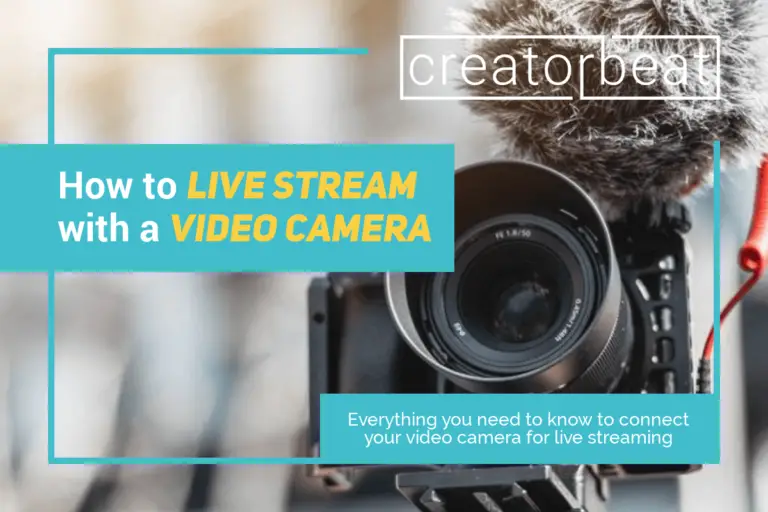

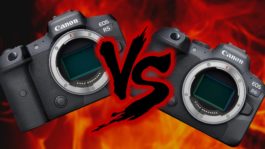
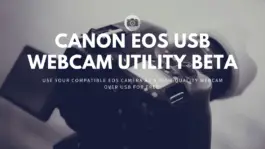
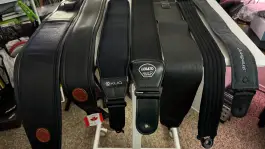
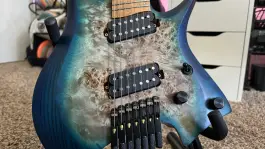


0 thoughts on “How to live stream with a video camera [2022]”